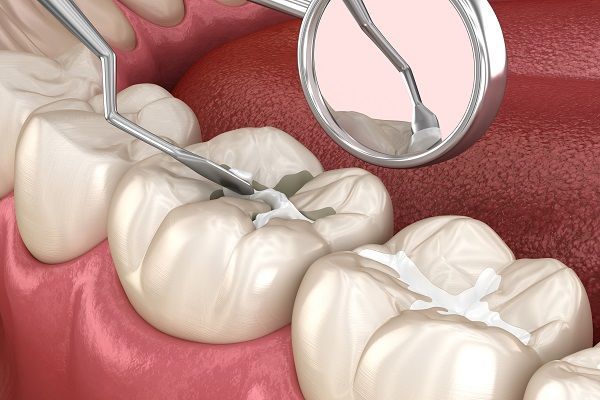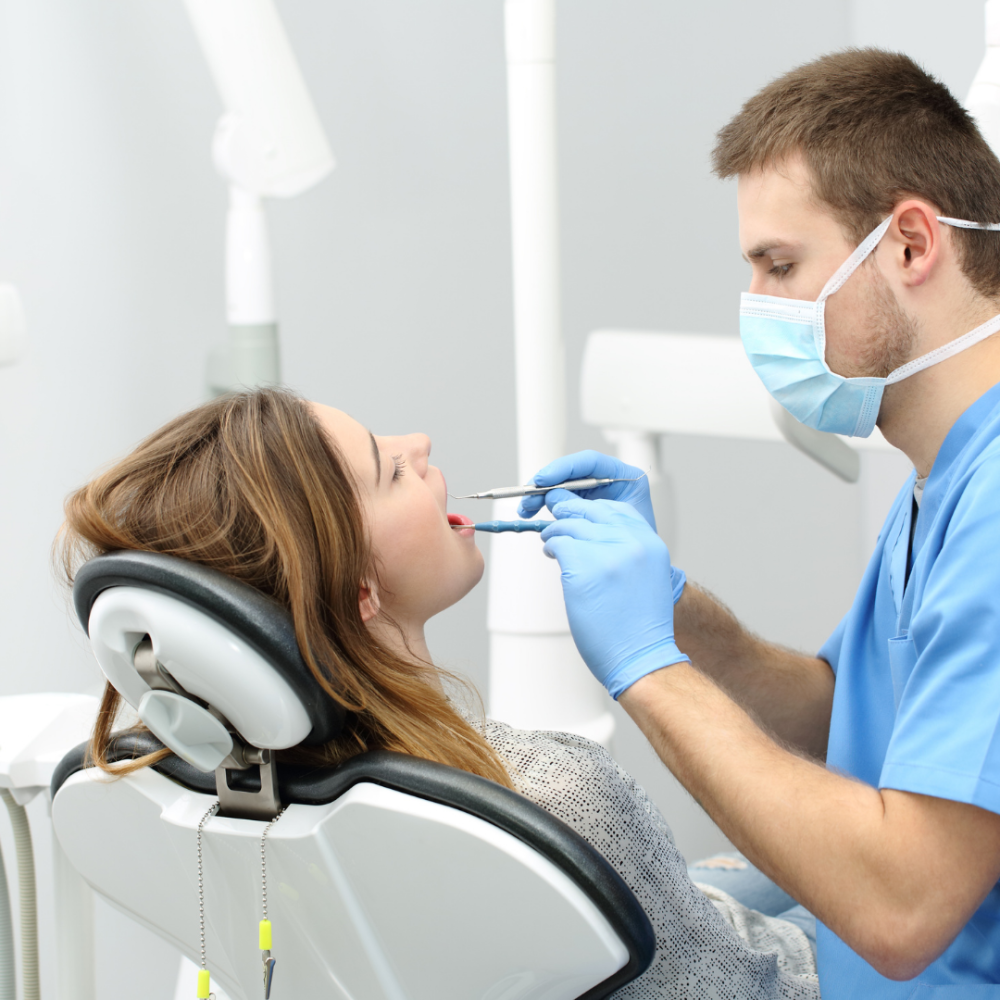In 1945, Grand Rapids, MI, became the first community in the world to add fluoride to the municipal water supply in order to help prevent tooth decay. When subsequent studies showed a significantly lower rate of cavities in schoolchildren, water fluoridation spread to other towns and cities — including Chicago. The Centers for Disease Control and Prevention (CDC) considers fluoridation of water one of the greatest achievements in public health in the 20th century.
The CDC provides this succinct explanation of fluoride’s effectiveness:
“Fluoride works by stopping or even reversing the tooth decay process — it keeps tooth enamel strong and solid. Certain bacteria in the mouth cause tooth decay. When a person eats sugar and other refined carbohydrates, these bacteria produce acid that removes minerals from the surface of the tooth. Fluoride helps to remineralize tooth surfaces and prevents cavities from forming.”
Although the benefits of fluoride in cavity prevention are well-established, the need for (and safety of) its addition to drinking water remains a subject of debate. Because we at 24/7 Local Dentist believe that well-informed people are better able to make good decisions about their dental and overall health, we present the following myths and facts regarding fluoride.
Fluoride is Not Naturally Present in Water
Fluoride is a mineral that occurs naturally and is released from rocks into the soil, water and air. Almost all water contains some fluoride , but usually not enough to prevent tooth decay. The American Dental Association (ADA) recommends community fluoridation to achieve the level necessary to do so. Its guidelines are available at ADA.org/fluoride . The city of Chicago fluoridates its water to approximately 1.0ppm within the guidelines of the ADA (0.7ppm to 1.2ppm).
All Fluoride is the Same
Fluoride is typically used as a generic term, although the facts are more complex. There are three types of fluoride additives typically used in municipal water supplies. The CDC provides the following breakdown :
- Fluorosilicic acid: a water-based solution used by most water systems in the United States. Fluorosilicic acid is also referred to as hydrofluorosilicate, FSA, or HFS.
- Sodium fluorosilicate: a dry salt additive, dissolved into a solution before being added to water.
- Sodium fluoride: a dry salt additive, typically used in small water systems, dissolved into a solution before being added to water.
To complicate matters, oral hygiene products such as toothpaste contain one of two fluoride compounds: stannous fluoride and sodium fluoride. Stannous fluoride is an antibacterial agent that’s clinically proven to protect against gingivitis, plaque and tooth sensitivity, while still protecting against cavities. Sodium fluoride protects against cavities, but doesn’t provide protection from these other conditions.
Fluoride can also be prescribed as a liquid, tablet or chewable tablet for children and adults in areas that do not have fluoridated water. As our blog post — “ What to Look for in a Toothpaste ” — covers, your dentist may recommend a fluoride toothpaste that’s available by prescription only. Prescription fluoride toothpaste contains a higher concentration of fluoride (5000 parts per million) than over-the-counter brands, which is the maximum strength. It’s typically prescribed for patients whose teeth are especially susceptible to cavities — as in the case of weak enamel due to being prescribed tetracycline in childhood — or after periodontal surgery that exposes the roots of the teeth .
Fluoridated Water Isn’t Necessary Because Most Toothpastes Contain Fluoride
Although fluoride toothpaste is very effective in preventing tooth decay, fluoridated water provides extra protection. According to Campaign for Dental Health — a program of the American Academy of Pediatrics — the benefits of water fluoridation build on those from fluoride toothpaste . Fluoride toothpaste alone is not enough, which is why pediatricians and dentists often prescribe fluoride tablets to children living in non-fluoridated areas.
Fluoridated Water Does Not Have an Impact on Tooth Decay
Numerous studies conducted over the years have shown that fluoridation reduces tooth decay. Campaign for Dental Health provides the following:
- An analysis of two similarly sized, adjacent communities in Arkansas showed that residents without access to fluoridated water had twice as many cavities as those with access to fluoridated water.
- A 2007 review of studies found that fluoride prevents caries (tooth decay) among adults of all ages and that fluoridated water prevents decay by as much as 27%.
Fluoride is Harmful to Children
In fact, getting enough fluoride in childhood is critical to strengthening teeth over an entire lifetime. Children need fluoride to strengthen their developing and emerging teeth — which include primary (baby) teeth. The use of fluoride to prevent and control cavities is documented to be both safe and effective. According to the Campaign for Dental Health , a 2010 study confirmed that the fluoridated water consumed as a young child makes the loss of teeth due to decay less likely 40 or 50 years later.
When it comes to brushing with a toothpaste containing fluoride, the ADA’s guideline for children under three years of age is to brush using a “smear” of fluoride-containing toothpaste, no larger than the size of a grain of rice. Parents should brush their child’s teeth twice a day, once in the morning and once at night. When your child turns three, the ADA recommends that you continue brushing your child’s teeth twice a day, but with a slightly larger portion of fluoride toothpaste, the size of a pea.
Drinking Fluoridated Water Can Cause Fluorosis
Fluorosis is a condition characterized by staining, pitting, and/or surface irregularities of tooth enamel caused by overexposure to fluoride during the first eight years of life. This is the time when most permanent teeth are being formed. The concentration of fluoride added to the drinking water supply is very unlikely to lead to fluorosis. However, this is why it is important to follow the guidelines on the appropriate amount of toothpaste to use for children, to supervise children when brushing, and to teach them not to swallow, but to spit when finished.
Drinking Fluoridated Water Causes Cancer
According to the American Cancer Society , the US Public Health Service issued a report on the benefits and risks of fluoride in 1991. When looking at a possible link with cancer, they first reviewed the results of studies done with lab animals. They concluded that the few studies available “fail[ed] to establish an association between fluoride and cancer.” They also looked at population-based studies, including a large study conducted by the National Cancer Institute. They concluded: “Optimal fluoridation of drinking water does not pose a detectable cancer risk to humans as evidenced by extensive human epidemiological data available to date, including the new studies prepared for this report.”
European Countries Do Not Allow Fluoridation of Their Municipal Water Supplies
European countries do have water fluoridation systems in place. Fluoridated water reaches 12 million Europeans, mostly in Great Britain, Ireland, and Spain. At least 70 million Europeans consume fluoridated salt — which is used to reach most of the population in Germany and Switzerland. These two countries have the lowest rates of tooth decay in Europe.
Ask Your Dentist — Your Trusted Partner in Oral Health
The internet can be a valuable source of information on numerous topics, but credible sources dealing with oral health — or general health — can sometimes be difficult to separate from unreliable sources based on “junk science.”
When you have questions about the safety or effectiveness of any matter relating to oral health, the best person to ask is your dentist . Our team of experienced, dedicated dental professionals will help address your oral health concerns, and determine the best solution for you based on your individual situation. We strive to identify treatment options that fit your needs.
We understand that the main concern you may have is cost, which is why we accept all major PPO plans for dental insurance and also offer our in-house dental plan. Please see our financing page for more information.











Resource Links
Disclaimer
247 local dentist is a dentists referral service. We connect you with dentists in your area. All dentist are operated independently of 247 local dentist. It is the responsibility of each user to verify that the dentist connected with meets all licensing and insurance requirements in that jurisdiction.
Photos on 247 local dentist are for design purposes only and do not represent the dental services in your area.
Services will not be available in all areas, and when services are available, they may vary depending on providers available.